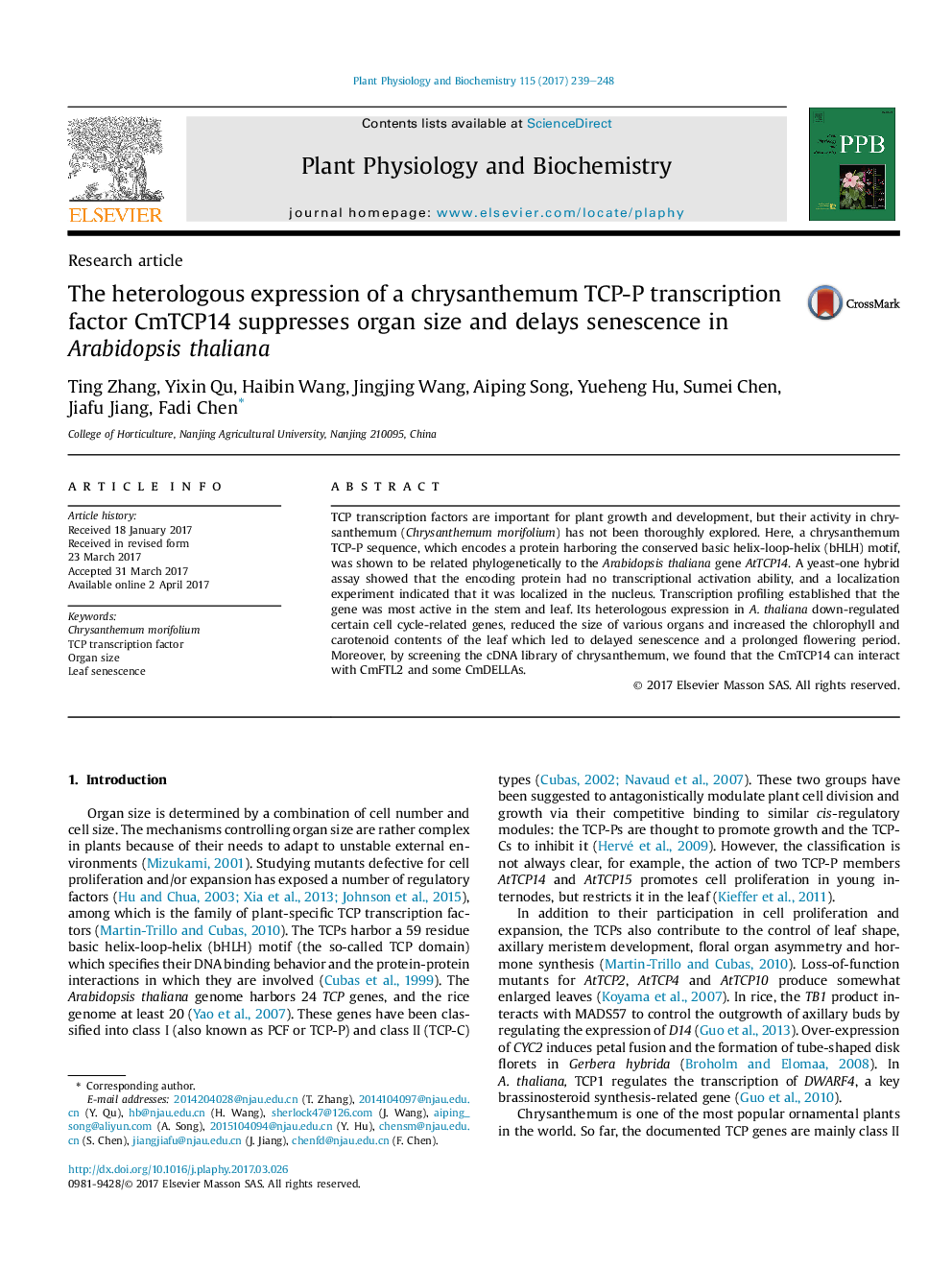| Article ID | Journal | Published Year | Pages | File Type |
|---|---|---|---|---|
| 5515389 | Plant Physiology and Biochemistry | 2017 | 10 Pages |
â¢This study describes the isolation of a TCP-P transcription factor CmTCP14 from Chrysanthemum.â¢Heterologous expression studies showed that CmTCP14 suppresses organ size, delays leaf senescence and prolong flowering time.â¢Overexpression of CmTCP14 down regulated some cell-cycle related and up regulated chlorophyll synthesis-related genes.â¢Y2H assay indicated CmTCP14 can interact with CmFTL2 and some CmDELLAs.
TCP transcription factors are important for plant growth and development, but their activity in chrysanthemum (Chrysanthemum morifolium) has not been thoroughly explored. Here, a chrysanthemum TCP-P sequence, which encodes a protein harboring the conserved basic helix-loop-helix (bHLH) motif, was shown to be related phylogenetically to the Arabidopsis thaliana gene AtTCP14. A yeast-one hybrid assay showed that the encoding protein had no transcriptional activation ability, and a localization experiment indicated that it was localized in the nucleus. Transcription profiling established that the gene was most active in the stem and leaf. Its heterologous expression in A. thaliana down-regulated certain cell cycle-related genes, reduced the size of various organs and increased the chlorophyll and carotenoid contents of the leaf which led to delayed senescence and a prolonged flowering period. Moreover, by screening the cDNA library of chrysanthemum, we found that the CmTCP14 can interact with CmFTL2 and some CmDELLAs.
